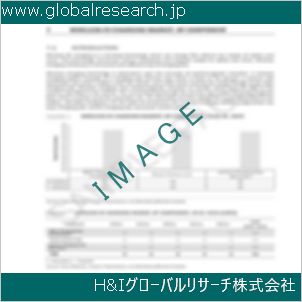Table of Contents
1 Industry Overview of Peracetic Acid
1.1 Definition and Specifications of Peracetic Acid
1.1.1 Definition of Peracetic Acid
1.1.2 Specifications of Peracetic Acid
1.2 Classification of Peracetic Acid
1.3 Applications of Peracetic Acid
1.3.1 Nuclear Application
1.3.2 Non-Nuclear Application
1.4 Industry Chain Structure of Peracetic Acid
1.5 Industry Overview and Major Regions Status of Peracetic Acid
1.5.1 Industry Overview of Peracetic Acid
1.5.2 Global Major Regions Status of Peracetic Acid
1.6 Industry Policy Analysis of Peracetic Acid
1.7 Industry News Analysis of Peracetic Acid
2 Manufacturing Cost Structure Analysis of Peracetic Acid
2.1 Raw Material Suppliers and Price Analysis of Peracetic Acid
2.2 Equipment Suppliers and Price Analysis of Peracetic Acid
2.3 Labor Cost Analysis of Peracetic Acid
2.4 Other Costs Analysis of Peracetic Acid
2.5 Manufacturing Cost Structure Analysis of Peracetic Acid
2.6 Manufacturing Process Analysis of Peracetic Acid
3 Technical Data and Manufacturing Plants Analysis of Peracetic Acid
3.1 Capacity and Commercial Production Date of Global Peracetic Acid Major Manufacturers in 2023
3.2 Manufacturing Plants Distribution of Global Peracetic Acid Major Manufacturers in 2023
3.3 R&D Status and Technology Source of Global Peracetic Acid Major Manufacturers in 2023
3.4 Raw Materials Sources Analysis of Global Peracetic Acid Major Manufacturers in 2023
4 Capacity, Production and Revenue Analysis of Peracetic Acid by Regions, Types and Manufacturers
4.1 Global Capacity, Production and Revenue of Peracetic Acid by Regions 2019-2024
4.2 Global and Major Regions Capacity, Production, Revenue and Growth Rate of Peracetic Acid 2019-2024
4.3 Global Capacity, Production and Revenue of Peracetic Acid by Types 2019-2024
4.4 Global Capacity, Production and Revenue of Peracetic Acid by Manufacturers 2019-2024
5 Price, Cost, Gross and Gross Margin Analysis of Peracetic Acid by Regions, Types and Manufacturers
5.1 Price, Cost, Gross and Gross Margin Analysis of Peracetic Acid by Regions 2019-2024
5.2 Price, Cost, Gross and Gross Margin Analysis of Peracetic Acid by Types 2019-2024
5.3 Price, Cost, Gross and Gross Margin Analysis of Peracetic Acid by Manufacturers 2019-2024
6 Consumption Volume, Consumption Value and Sale Price Analysis of Peracetic Acid by Regions, Types and Applications
6.1 Global Consumption Volume and Consumption Value of Peracetic Acid by Regions 2019-2024
6.2 Global and Major Regions Consumption Volume, Consumption Value and Growth Rate of Peracetic Acid 2019-2024
6.3 Global Consumption Volume and Consumption Value of Peracetic Acid by Types 2019-2024
6.4 Global Consumption Volume and Consumption Value of Peracetic Acid by Applications 2019-2024
6.5 Sale Price of Peracetic Acid by Regions 2019-2024
6.6 Sale Price of Peracetic Acid by Types 2019-2024
6.7 Sale Price of Peracetic Acid by Applications 2019-2024
6.8 Market Share Analysis of Peracetic Acid by Different Sale Price Levels
7 Supply, Import, Export and Consumption Analysis of Peracetic Acid
7.1 Supply, Consumption and Gap of Peracetic Acid 2019-2024
7.2 Global Capacity, Production, Price, Cost, Revenue, Supply, Import, Export and Consumption of Peracetic Acid 2019-2024
7.3 USA Capacity, Production, Price, Cost, Revenue, Supply, Import, Export and Consumption of Peracetic Acid 2019-2024
7.4 EU Capacity, Production, Price, Cost, Revenue, Supply, Import, Export and Consumption of Peracetic Acid 2019-2024
7.5 China Capacity, Production, Price, Cost, Revenue, Supply, Import, Export and Consumption of Peracetic Acid 2019-2024
7.6 Japan Capacity, Production, Price, Cost, Revenue, Supply, Import, Export and Consumption of Peracetic Acid 2019-2024
8 Major Manufacturers Analysis of Peracetic Acid
8.1 Manufacturer One
8.1.1 Company Profile
8.1.2 Product Picture and Specifications
8.1.2.1 Type I
8.1.2.2 Type II
8.1.2.3 Type III
8.1.3 Capacity, Production, Price, Cost, Gross and Revenue
8.1.4 Contact Information
8.2 Manufacturer Two
8.2.1 Company Profile
8.2.2 Product Picture and Specifications
8.2.2.1 Type I
8.2.2.2 Type II
8.2.2.3 Type III
8.2.3 Capacity, Production, Price, Cost, Gross and Revenue
8.2.4 Contact Information
8.3 Manufacturer Three
8.3.1 Company Profile
8.3.2 Product Picture and Specifications
8.3.2.1 Type I
8.3.2.2 Type II
8.3.2.3 Type III
8.3.3 Capacity, Production, Price, Cost, Gross and Revenue
8.3.4 Contact Information
8.4 Manufacturer Four
8.4.1 Company Profile
8.4.2 Product Picture and Specifications
8.4.2.1 Type I
8.4.2.2 Type II
8.4.2.3 Type III
8.4.3 Capacity, Production, Price, Cost, Gross and Revenue
8.4.4 Contact Information
8.5 Manufacturer Five
8.5.1 Company Profile
8.5.2 Product Picture and Specifications
8.5.2.1 Type I
8.5.2.2 Type II
8.5.2.3 Type III
8.5.3 Capacity, Production, Price, Cost, Gross and Revenue
8.5.4 Contact Information
…
9 Marketing Trader or Distributor Analysis of Peracetic Acid
9.1 Marketing Channels Status of Peracetic Acid
9.2 Traders or Distributors with Contact Information of Peracetic Acid by Regions
9.3 Ex-work Price, Channel Price and End Buyer Price Analysis of Peracetic Acid
9.4 Regional Import, Export and Trade Analysis of Peracetic Acid
10 Industry Chain Analysis of Peracetic Acid
10.1 Upstream Major Raw Materials Suppliers Analysis of Peracetic Acid
10.1.1 Major Raw Materials Suppliers with Contact Information Analysis of Peracetic Acid
10.1.2 Major Raw Materials Suppliers with Supply Volume Analysis of Peracetic Acid by Regions
10.2 Upstream Major Equipment Suppliers Analysis of Peracetic Acid
10.2.1 Major Equipment Suppliers with Contact Information Analysis of Peracetic Acid
10.2.2 Major Equipment Suppliers with Product Pictures Analysis of Peracetic Acid by Regions
10.3 Downstream Major Consumers Analysis of Peracetic Acid
10.3.1 Major Consumers with Contact Information Analysis of Peracetic Acid
10.3.2 Major Consumers with Consumption Volume Analysis of Peracetic Acid by Regions
10.4 Supply Chain Relationship Analysis of Peracetic Acid
11 Development Trend of Analysis of Peracetic Acid
11.1 Capacity, Production and Revenue Forecast of Peracetic Acid by Regions and Types
11.1.1 Global Capacity, Production and Revenue of Peracetic Acid by Regions 2024-2029
11.1.2 Global and Major Regions Capacity, Production, Revenue and Growth Rate of Peracetic Acid 2024-2029
11.1.3 Global Capacity, Production and Revenue of Peracetic Acid by Types 2024-2029
11.2 Consumption Volume and Consumption Value Forecast of Peracetic Acid by Regions, Types and Applications
11.2.1 Global Consumption Volume and Consumption Value of Peracetic Acid by Regions 2024-2029
11.2.2 Global and Major Regions Consumption Volume, Consumption Value and Growth Rate of Peracetic Acid 2024-2029
11.2.3 Global Consumption Volume and Consumption Value of Peracetic Acid by Types 2024-2029
11.2.4 Global Consumption Volume and Consumption Value of Peracetic Acid by Applications 2024-2029
11.3 Supply, Import, Export and Consumption Forecast of Peracetic Acid
11.3.1 Supply, Consumption and Gap of Peracetic Acid 2024-2029
11.3.2 Global Capacity, Production, Price, Cost, Revenue, Supply, Import, Export and Consumption of Peracetic Acid 2024-2029
11.3.3 USA Capacity, Production, Price, Cost, Revenue, Supply, Import, Export and Consumption of Peracetic Acid 2024-2029
11.3.4 EU Capacity, Production, Price, Cost, Revenue, Supply, Import, Export and Consumption of Peracetic Acid 2024-2029
11.3.5 China Capacity, Production, Price, Cost, Revenue, Supply, Import, Export and Consumption of Peracetic Acid 2024-2029
11.3.6 Japan Capacity, Production, Price, Cost, Revenue, Supply, Import, Export and Consumption of Peracetic Acid 2024-2029
12 New Project Investment Feasibility Analysis of Peracetic Acid
12.1 New Project SWOT Analysis of Peracetic Acid
12.2 New Project Investment Feasibility Analysis of Peracetic Acid
13 Conclusion of the Global Peracetic Acid (CAS 79-21-0) Industry 2024 Market Research Report
| ※参考情報 過酢酸(Peracetic Acid)は、化学式C2H4O3で表される有機化合物で、CAS番号は79-21-0です。過酢酸は、酢酸と過酸化水素を反応させて生成される強力な酸化剤であり、その特異な構造と性質から、多岐にわたる用途を持っています。 過酢酸は、無色透明の液体であり、特有の刺激臭を有しています。この化合物は、強い酸性を示し、揮発性があるため、扱いには注意が必要です。分子内に過酸化基を持つため、候補酸化剤としての性質が非常に強く、さまざまな化学反応に利用されます。 過酢酸の特徴は、まずその強力な殺菌効果です。大腸菌やリステリア、サルモネラなどの細菌に対して優れた抗菌活性を示し、そのため食品業界や医療分野での消毒剤として重宝されています。また、過酢酸は有機物と反応する能力が高いため、漂白剤としても利用されます。 過酢酸の種類については、主にその濃度や生成方法に応じて分類されます。一般的には、低濃度(約5-15%)から高濃度(15%以上)のものがあり、用途に応じて適切な濃度を選定することが重要です。製造方法としては、酢酸と過酸化水素を混合する方法が一般的ですが、触媒を用いた合成法も存在します。これにより反応条件を最適化し、より効率的に過酢酸を得ることができます。 過酢酸の用途は非常に多岐にわたります。まず、食品業界においては、冷凍食品やお肉の消毒処理に利用されており、保存性を向上させる役割を果たしています。また、乳製品の加工や、野菜や果物の洗浄にも使われることがあります。このように、過酢酸は食品衛生を確保するための重要な成分として位置付けられています。 さらに、医療分野では、手術器具や病院内部の消毒に広く利用されており、MRSAやノロウイルスなどの耐性菌にも効果があることが知られています。そのため、過酢酸は感染症対策の一環としても重要な役割を果たしています。消毒剤としての効果だけでなく、過酢酸は生物分解性があるため、環境への負荷も小さい点が評価されています。 工業用途においても、過酢酸は重要な役割を担っています。紙の漂白や繊維の処理、水処理プラントでの藻類及びバイオフィルムの除去などに利用され、幅広い産業での応用が進められています。また、香料や医薬品の原料としても使用されることがあり、その多様な化学的特性が、さまざまな製品開発につながっています。 関連技術としては、過酢酸の安定化技術が挙げられます。過酢酸は揮発性が高く、不安定な性質を持っているため、その安定性を向上させるための研究が行われています。例えば、過酢酸を安定化するための添加剤や、微細粒子化技術を用いて、取り扱いや保存が容易になるよう工夫されています。また、過酢酸を使用した新しい消毒プロセスの開発に関しても多くの研究が進行中です。 過酢酸は、取り扱いや保管において注意が必要な化合物です。その強力な酸化性により、他の化学物質と反応することがあり、適切な安全対策を施す必要があります。使用する際には、適切な個人防護具(PPE)の着用や、換気の良い場所での作業が求められます。また、高濃度の過酢酸は腐食性があるため、保存容器や配管材料の選定についても留意が必要です。 最後に、過酢酸の環境への影響についても触れたいと思います。生物分解性が高く、適切に使用されれば環境への負荷が少ないとされていますが、未処理の過酢酸が環境中に流出すると水生生物に対して有害である可能性があります。そのため、廃棄物管理や処理においては、十分な配慮が求められます。 総じて、過酢酸はその特異な性質から多岐にわたる分野で利用される重要な化合物であり、今後も新たな研究や技術開発が期待されています。その利用にあたっては、安全性や環境への配慮を念頭に置くことが重要です。 |
❖ 免責事項 ❖
http://www.globalresearch.jp/disclaimer












